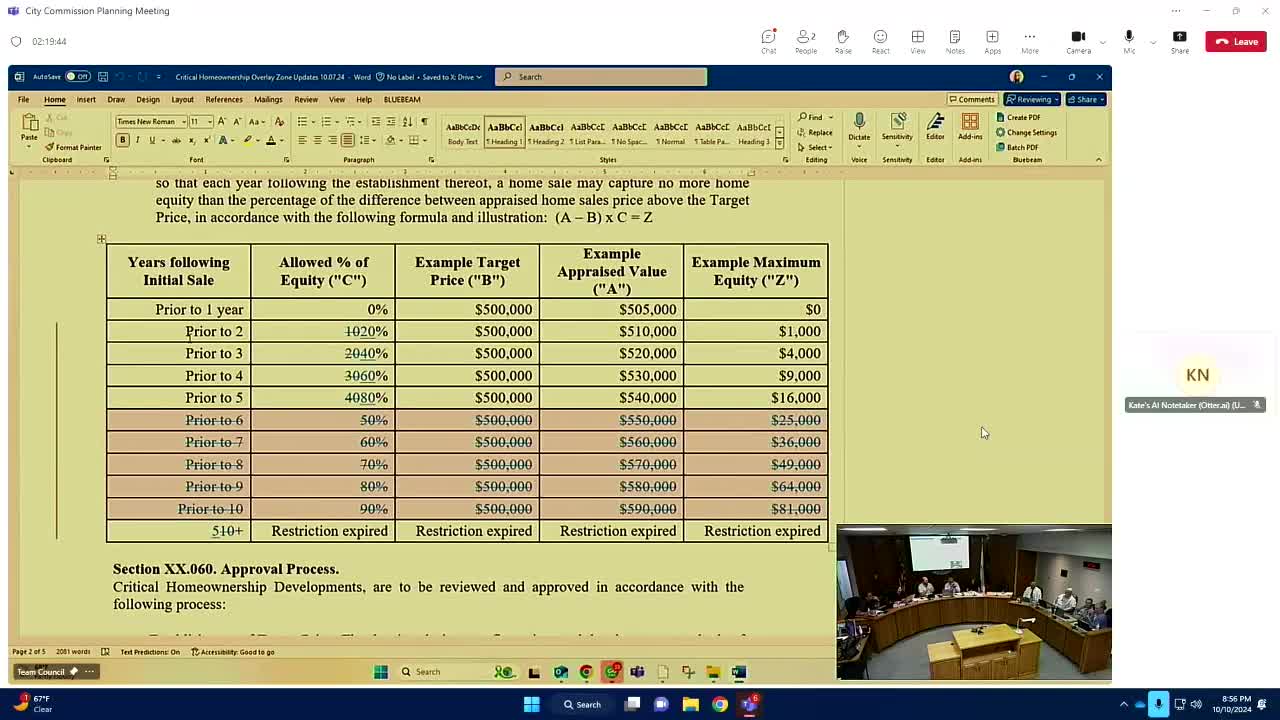Debate heats up over housing affordability strategies
October 10, 2024 | Lehi City Planning Commission, Lehi, Utah County, Utah
This article was created by AI summarizing key points discussed. AI makes mistakes, so for full details and context, please refer to the video of the full meeting. Please report any errors so we can fix them. Report an error »

In a recent government meeting, officials engaged in a robust discussion regarding land use decisions and their impact on property values, particularly in the context of proposed overlay zones aimed at increasing affordable housing options. The dialogue highlighted the complexities of balancing the needs of current homeowners with the demand for affordable housing, as participants expressed concerns about how new developments could affect existing property values.
One key point raised was the influence of comparable properties on market values. Participants noted that appraisers often look at nearby homes to determine value, suggesting that the introduction of new housing types could potentially devalue existing homes if not managed carefully. This concern was echoed by several commissioners who emphasized the need for thorough analysis and research to understand the implications of overlay zones on property values.
The discussion also touched on the possibility of having multiple overlay zones in a single area, which could complicate the development process. While some commissioners acknowledged the potential for such zoning, they cautioned that it could lead to confusion and inconsistency in land use decisions.
A significant portion of the meeting was dedicated to exploring the proposed changes to housing regulations, including the idea of limiting the size of new homes to ensure they remain affordable. Some commissioners advocated for a reduction in home sizes as a means to lower overall costs, arguing that larger homes on smaller lots would not effectively address the affordability crisis.
The conversation also included a proposal to extend the time frame for first-time buyers to purchase homes under new regulations, aiming to prevent corporate investors from quickly acquiring properties and driving up prices. This suggestion was met with general agreement, as participants recognized the need to prioritize local residents and essential workers in the housing market.
As the meeting concluded, officials acknowledged the importance of public input in shaping these policies. They emphasized that while the proposed overlay zones and housing regulations are tools to address affordability, careful consideration and community feedback will be essential in ensuring they meet the needs of all stakeholders involved. The planning commission plans to present their findings and recommendations to the city council, where further discussions will take place.
One key point raised was the influence of comparable properties on market values. Participants noted that appraisers often look at nearby homes to determine value, suggesting that the introduction of new housing types could potentially devalue existing homes if not managed carefully. This concern was echoed by several commissioners who emphasized the need for thorough analysis and research to understand the implications of overlay zones on property values.
The discussion also touched on the possibility of having multiple overlay zones in a single area, which could complicate the development process. While some commissioners acknowledged the potential for such zoning, they cautioned that it could lead to confusion and inconsistency in land use decisions.
A significant portion of the meeting was dedicated to exploring the proposed changes to housing regulations, including the idea of limiting the size of new homes to ensure they remain affordable. Some commissioners advocated for a reduction in home sizes as a means to lower overall costs, arguing that larger homes on smaller lots would not effectively address the affordability crisis.
The conversation also included a proposal to extend the time frame for first-time buyers to purchase homes under new regulations, aiming to prevent corporate investors from quickly acquiring properties and driving up prices. This suggestion was met with general agreement, as participants recognized the need to prioritize local residents and essential workers in the housing market.
As the meeting concluded, officials acknowledged the importance of public input in shaping these policies. They emphasized that while the proposed overlay zones and housing regulations are tools to address affordability, careful consideration and community feedback will be essential in ensuring they meet the needs of all stakeholders involved. The planning commission plans to present their findings and recommendations to the city council, where further discussions will take place.
View full meeting
This article is based on a recent meeting—watch the full video and explore the complete transcript for deeper insights into the discussion.
View full meeting

